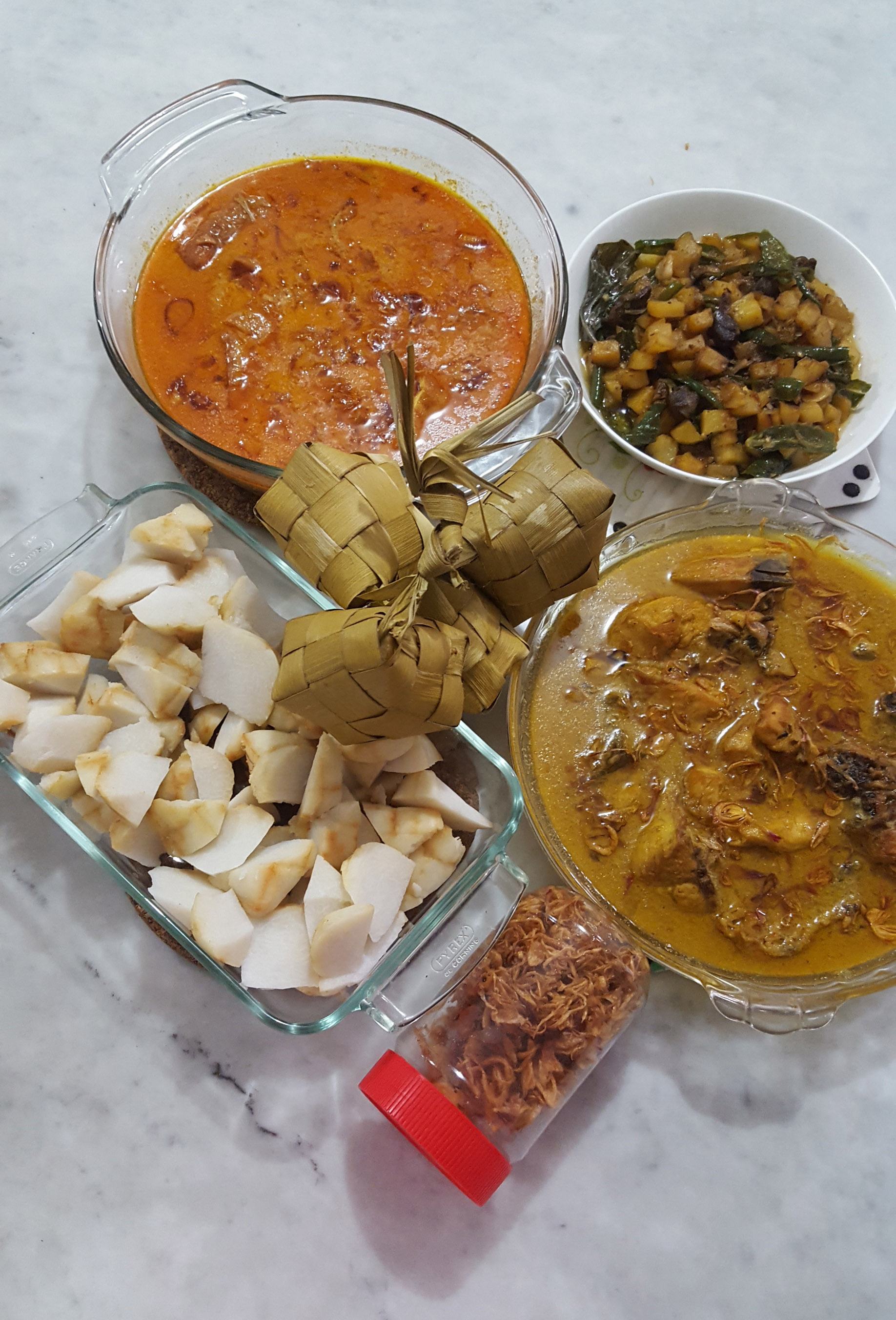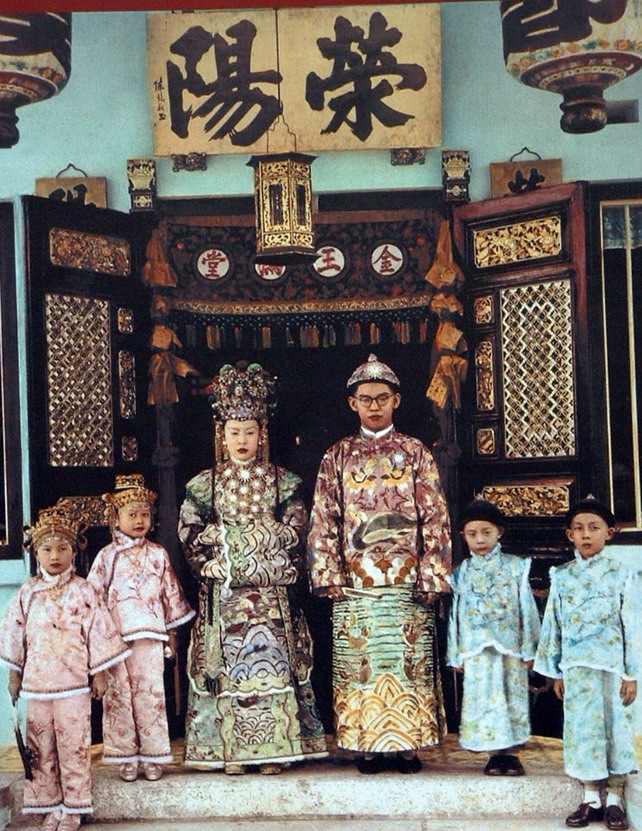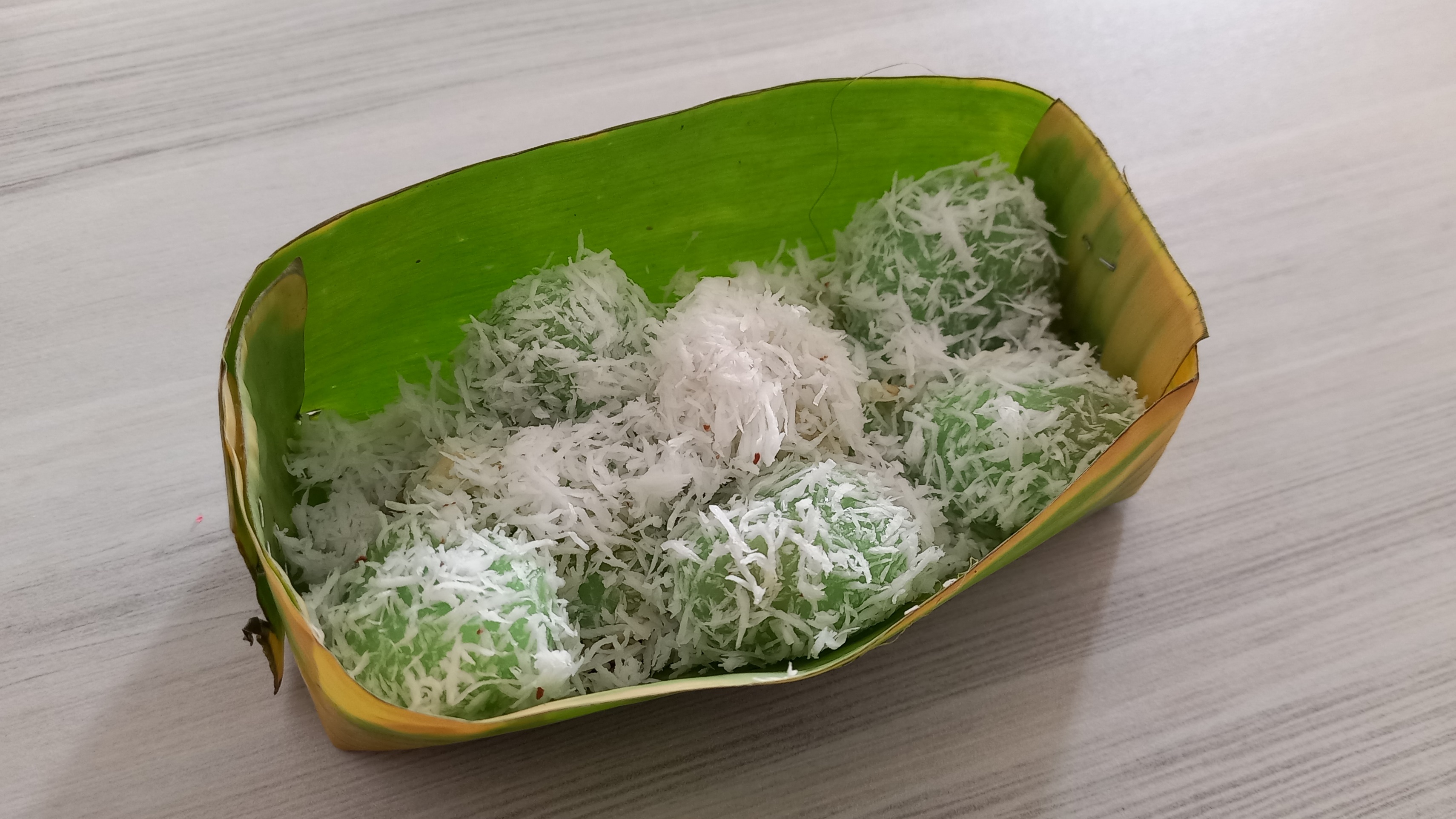|
Kue
Kue are bite-sized snacks or desserts originally from what is now Indonesia but have since spread throughout Southeast Asia. ''Kue'' is a fairly broad term in Indonesian to describe a wide variety of snacks including cakes, cookies, fritters, pies, scones, and patisserie. ''Kue'' are made from a variety of ingredients in various forms; some are steamed, fried or baked. They are popular snacks in Indonesia, which has the largest variety of ''kue''. Because of the countries' historical colonial ties, ''Koeé'' (kue) is also popular in the Netherlands. Indonesian ''kue'' demonstrate local native delicacies, Chinese and Indian influences, as well as European cake and pastry influences. For example, ''wajik'', '' kue bugis'', '' klepon'', '' nagasari'', '' getuk'', and '' lupis'' are of native origin''; while bakpia'' and '' kue ku'' are of Chinese Peranakan origin, '' kue putu'' is derived from Indian puttu; on the other hand, '' lapis legit'', '' kue cubit'', '' kastengel'', '' ... [...More Info...] [...Related Items...] OR: [Wikipedia] [Google] [Baidu] |
Kuih
''Kuih'' ( Jawi: ; Indonesian: ; derived from the Hokkien and Teochew ''kueh'' – ) are bite-sized snack or dessert foods commonly found in Southeast Asia, Taiwan, and China. It is a fairly broad term which may include items that would be called cakes, cookies, dumplings, pudding, biscuits, or pastries in English and are usually made from rice or glutinous rice. In China, where the term originates from, ''kueh'' or () in the Min Nan languages (known as in Mandarin) refers to snacks which are typically made from rice but can occasionally be made from other grains such as wheat. The term is widely used in Malaysia, Brunei, and Singapore, ''kueh'' is used in Singapore and Indonesia, is used in Indonesia only, all three refer to sweet or savoury desserts. Similar snacks are found throughout Southeast Asia, including the Burmese '' mont'', Filipino '' kakanin'', Thai '' khanom'' and Vietnamese . For example, the colourful steamed and the rich are also available in M ... [...More Info...] [...Related Items...] OR: [Wikipedia] [Google] [Baidu] |
Kue Bugis
Kue bugis is Indonesian cuisine, Indonesian ''kue'' or traditional snack of soft glutinous rice flour cake, filled with sweet grated coconut. The name is suggested to be related to Bugis ethnic group of South Sulawesi as their traditional delicacy, and it is originated from Makassar. In Java the almost identical kue is called kue mendut or Koci Koci. Kue bugis, together with ''kue lapis'' and ''nagasari'' are among popular ''kue'' or Indonesian traditional sweet snacks, commonly found in Indonesian traditional marketplace as ''jajan pasar'' (market munchies). Ingredients and cooking method The cake is made of ''ketan'' (glutinous rice) flour as the skin, filled with grated coconut flesh sweetened with palm sugar. The skin is made of flattened dough made from the mixture of glutinous rice flour, wheat flour, mashed potatoes, ''santan'' (coconut milk), sugar and salt, and colored with ''suji'' or green colored Pandanus amaryllifolius, pandan. The sweet filling is made of grated coc ... [...More Info...] [...Related Items...] OR: [Wikipedia] [Google] [Baidu] |
Indonesian Cuisine
Indonesian cuisine is a collection of various regional culinary traditions by various ethnic groups that formed in the archipelagic nation of Indonesia. There are a wide variety of recipes and cuisines in part because Indonesia is composed of approximately 6,000 populated List of islands of Indonesia, islands of the total 17,508 in the world's largest archipelago,"Indonesian Cuisine." . Accessed July 2011. Tradition and characteristics Indonesia has around 5,350 traditional recipes, with 30 of them ...[...More Info...] [...Related Items...] OR: [Wikipedia] [Google] [Baidu] |
Peranakan
The Peranakan Chinese () are an ethnic group defined by their genealogical descent from the first waves of Southern Chinese settlers to maritime Southeast Asia, known as Nanyang (region), Nanyang (), namely the British Empire, British, Portuguese Empire, Portuguese, and Dutch Empire, Dutch colonial ports in the Malay Peninsula and the List of islands of Indonesia, Indonesian Archipelago, as well as Singapore Island, Singapore. The Peranakan Chinese are often simply referred to as the Peranakans. Peranakan culture, especially in the dominant Peranakan centres of Malacca, Singapore, Penang, Phuket, and Tangerang, is characterized by its unique hybridization of ancient Chinese culture with the local cultures of the Nusantara (archipelago), Nusantara region, the result of a centuries-long history of transculturation and interracial marriage. Immigrants from the southern provinces of China arrived in significant numbers in the region between the 14th and 17th centuries, taking abode ... [...More Info...] [...Related Items...] OR: [Wikipedia] [Google] [Baidu] |
Kue Putu
''Kue putu'' or ''putu bambu'' is an Indonesian '' kue''. It is made of rice flour and coloured green with pandan leaves, filled with palm sugar, steamed in bamboo tubes (hence the name), and served with desiccated coconut. This traditional bite-sized snack is commonly found in maritime Southeast Asia, particularly in Java, Indonesia, where it is called ''putu bumbung''. ''Kue putu'' is usually sold by street vendors and can be found in traditional markets, along with other ''kues''. ''Kue putu'' can also be found in the Netherlands due to its colonial ties with Indonesia. Ingredients and cooking method It consists of rice flour with green pandan leaf colouring, filled with ground palm sugar. This green coconut-rice flour ingredients with palm sugar filling is filled into a bamboo tube container. Subsequently, the filled bamboo tubes are steamed upon a steam cooker with small holes opening to blow the hot steam. The cooked tubular cakes were then pushed out from the bamboo t ... [...More Info...] [...Related Items...] OR: [Wikipedia] [Google] [Baidu] |
Klepon
''Klepon'' () or ''kelepon'' or ''kalalapun'', also known outside Java as ''onde-onde'' and ''buah melaka'', is a sweet rice cake ball filled with molten palm sugar and coated in grated coconut. Of Javanese origin, the green-coloured glutinous rice balls are one of the popular traditional ''kue'' in Indonesian cuisine and have since spread throughout Southeast Asian cuisine. Ingredients and cooking method ''Klepon'' is a boiled rice cake filled with liquid palm sugar (''gula jawa/merah/melaka'') and coated in flaked coconut. The dough is made from glutinous rice flour, sometimes mixed with tapioca (or sweet potato alternatively) and a paste made from the leaves of the pandan or dracaena plants ('' daun suji'') — whose leaves are used widely in Southeast Asian cooking — giving the dough its green colour. The small pieces of palm sugar are initially solid when inserted into the glutinous rice dough and rolled into balls. The balls are subsequently boiled, which melts the ... [...More Info...] [...Related Items...] OR: [Wikipedia] [Google] [Baidu] |
Red Tortoise Cake
''Ang ku kueh'' (; Teochew Peng'im: ''ang⁵ gu¹ guê²''), also known as red tortoise cake, is a small round or oval-shaped Chinese sweet dumpling with soft, sticky glutinous rice flour skin wrapped around a sweet central filling. It is molded to resemble a tortoise shell and is presented resting on a square piece of banana leaf. As suggested by its name, red tortoise cakes are traditionally red in color and has a sticky, chewy texture when eaten. Red tortoise cakes are shaped like tortoise shells because the Chinese traditionally believed that eating tortoises would bring longevity, good fortune and prosperity. Considered to be auspicious items, these sweet pastries are especially prepared during important festivals such as Chinese New Year as offerings to the Chinese deities. Red tortoise cakes are also prepared for occasions that are culturally important to the Chinese such as a newborn baby's first month or birthdays of the elderly. Eating red tortoise cakes during thes ... [...More Info...] [...Related Items...] OR: [Wikipedia] [Google] [Baidu] |
Snack
A snack is a small portion of Human food, food generally Eating, eaten between meals. Snacks come in a variety of forms including Food packaging, packaged snack foods and other processed foods, as well as items made from fresh ingredients at home. Traditionally, snacks are prepared from a number of ingredients commonly available at home without a great deal of preparation. Often Lunch meat, cold cuts, fruits, leftovers, Nut (fruit), nuts, sandwiches, and Candy, sweets are used as snacks. With the spread of convenience stores, packaged snack foods became a significantly profitable business. Snack foods are typically designed to be portable, quick, and satisfying. Food processing, Processed snack foods, as one form of convenience food, are designed to be less perishable, more durable, and more portable than prepared foods. They often contain substantial amounts of Sugar substitute, sweeteners, preservatives, and appealing ingredients such as chocolate, peanuts, and specially d ... [...More Info...] [...Related Items...] OR: [Wikipedia] [Google] [Baidu] |
Singaporean Cuisine
Singaporean cuisine is derived from several ethnic groups in Singapore and has developed through centuries of political, economic, and social changes in the cosmopolitan city-state. Influences include the cuisines of the Malays/Indonesians, Chinese and the Indians as well as, Peranakan and Western traditions (particularly English and Portuguese-influenced Eurasian, known as Kristang). Influences from neighbouring regions such as Japan, Korea, and Thailand are also present. The cuisine has a medium spiciness range, mostly due to the influence from Indian and Malaysian cuisines. In Singapore, food is viewed as crucial to its national identity and a unifying cultural thread. Singaporean literature declares eating a national pastime and food a national obsession. Food is a frequent topic of conversation among Singaporeans. Religious dietary strictures do exist; Muslims do not eat pork and Hindus do not eat beef, and there is also a significant group of vegetarians/vegans. P ... [...More Info...] [...Related Items...] OR: [Wikipedia] [Google] [Baidu] |
Malaysian Cuisine
Malaysian cuisine (Malay language, Malay: ''Masakan Malaysia''; Jawi script, Jawi: ) consists of cooking traditions and practices found in Malaysia, and reflects the multi-ethnic makeup of its population. The vast majority of Malaysia's population can roughly be divided among three major ethnic groups: Ethnic Malays, Malays, Chinese Malaysian, Chinese and Indian Malaysian, Indians. The remainder consists of the Dayak people, indigenous peoples of Sabah and Sarawak in East Malaysia, the Orang Asli of Peninsular Malaysia, the Peranakan and Eurasian creole communities, as well as a significant number of foreign workers and expatriates. As a result of historical migrations, colonisation by foreign powers, and its geographical position within its wider home region, Malaysia's culinary style in the present day is primarily a melange of traditions from its Malay, Chinese, Indian, Indonesian cuisine, Indonesian, Thai, Filipino cuisine, Filipino and indigenous Bornean and Orang Asli, w ... [...More Info...] [...Related Items...] OR: [Wikipedia] [Google] [Baidu] |
Wajik
''Wajik'' or ''wajid'', also known as ''pulut manis'', is a traditional glutinous sweet made with rice, sugar and coconut milk. It is an Indonesia, Indonesian ''kue'', and a ''kuih'' of Brunei, Singapore and Malaysia (especially in the state of Sabah). Definition The Great Dictionary of the Indonesian Language of the Language Center, official Indonesian dictionary describes wajik as a confectionery made from a mixture of sticky rice, sugar, and coconut milk and cut into diamond shapes (rhombus or parallelogram). Ingredients and shapes The main ingredients of wajik are glutinous rice, palm sugar, and coconut milk. The high content of sugar serves as a natural preservative since sugar inhibits the growth of microbes. A correctly produced and packaged wajik could last for up to two weeks. To enhance the aroma, wajik is often enhanced with aromatic ingredients such as Pandanus, pandan, vanilla, or brown sugar and durian. A variant called ''wajik kelapa'' uses coconut and palm sug ... [...More Info...] [...Related Items...] OR: [Wikipedia] [Google] [Baidu] |
Lupis (food)
Lupis (sometimes lopis) is an Indonesian traditional sweet cake made of glutinous rice, banana leaves, coconut, and brown sugar sauce. Lupis is one of many glutinous rice desserts from Indonesia. Lupis are sometimes cylindrically shaped like Lontong, or shaped like a triangle. Lupis is usually eaten with thick palm sugar syrup and with shredded coconut toppings. Often eaten at breakfast or as a side dish during the evening, lupis is often sold at traditional marketplaces throughout Indonesia and is a popular food found nationwide, but especially in middle and eastern Java as well as West Sumatra. Lupis is one of the top desserts that tourists who visit Purwokerto in Java seek. Cooking method Lupis is made by first soaking glutinous rice in water, salt, and lime juice. After draining the water, the soaked glutinous rice is moved onto banana leaves in single-serving-size portions to be wrapped for shaping. The wrapped rice triangles are then put aside for the creation of the syrup ... [...More Info...] [...Related Items...] OR: [Wikipedia] [Google] [Baidu] |








